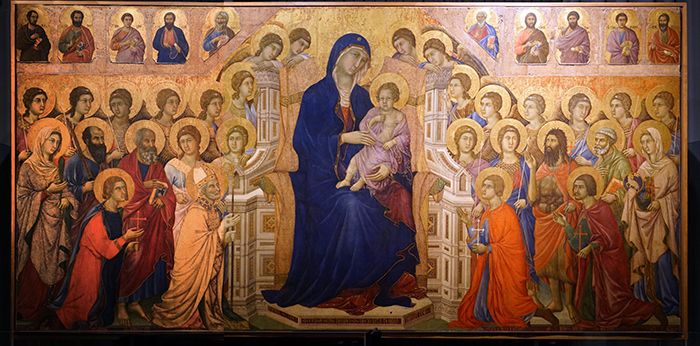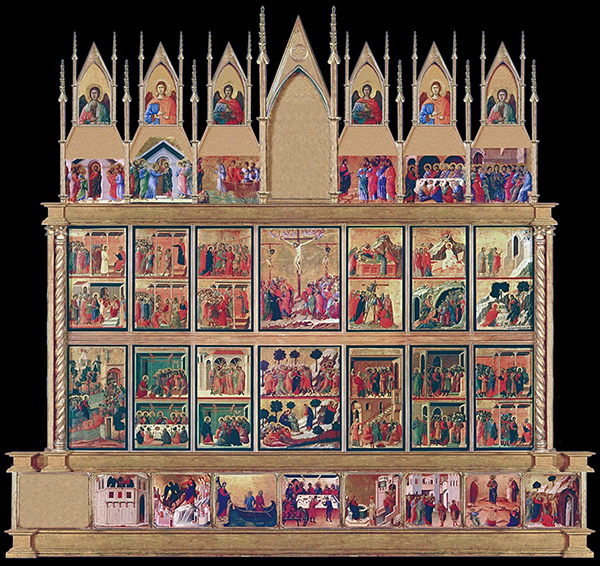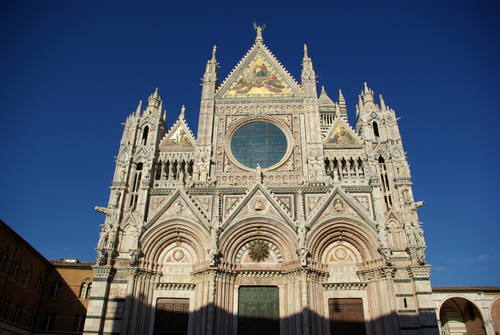Siena was a center of economic, political, and cultural life in the 14th century in Italy. It was also a cosmopolitan city in the late Middle age and early Renaissance era. However, Siena’s role in art and culture is often underappreciated because it’s considered not as important as Florence, their rival neighbor city.
In the early fourteenth century, Siena was a prosperous city, with several international banks built by the super-rich Sienese family. Many of Siena’s inhabitants are merchants who trade both for their country and foreign countries, like France. Siena’s city center was located around the Piazza del Campo.
Siena was a self-governing commune that was ruled by nine magistrates (Nove/ The Nine), chosen from the city’s wealthy family. This magistrate determined art patronage, helped to design the city’s public and largest buildings, and contribute to the church’s decoration.
At that time, several remarkable painters worked in Siena, such as Duccio, the Lorenzetti brothers, and Simone Martini. Their artworks didn’t only influence Italy, but also European art.
Siena’s Masterpieces
Siena was a stunning city with Gothic buildings decorates its skyline. They also have a great school of painting, in which Duccio di Buoninsegna becomes one of the key figures.
Duccio was famous for his altarpiece for Siena’s Cathedral. An altarpiece is a panel that represents a religious subject. It is usually placed above and behind an altar in a church. This altarpiece also shows Duccio’s notable skill in visual storytelling.

Duccio, Maestà (front), 1308–11 (Museo dell’Opera Metropolitana del Duomo, Siena (photo: Matt Brennan by permission, all rights reserved). https://www.khanacademy.org/
The front side of the altarpiece is a depiction of Maestà, the scene of the Virgin Mary (Madonna) seated on a throne and hold the infant Jesus in her lap, usually surrounded by saints and angels. He used light and shades to create a depth illusion. The figure looks so soft and real. This painting was applied on a wooden field covered by a gold leaf. The backside of the altarpiece tells about the life of Christ.

Duccio, Maestà (reconstruction of back), 1308–11 (Museo dell’Opera Metropolitana del Duomo, Siena) https://www.khanacademy.org/
Duccio’s Maestà becomes the main reference for other Sienese artists later, even for European painters. His works marked the transition from Middle Ages’ art that is oriented to sacred subject to the Renaissance that more human-oriented.
Another Sienese prominent painter is Simone Martini. He used detailed observation and mixing styles in painting. The Annunciation (1333) was one of his beautiful and sacred masterpieces. The swaying subject and the gold leaf as the background make this altarpiece is so gorgeous and elegant.
Simone Martini, The Annunciation, 1333, (Uffizi, Florence; photo: Steven Zucker, CC BY-NC-SA 2.0) https://www.khanacademy.org/
Other Sienese painters are the Lorenzetti brothers: Pietro and Ambrogio Lorenzetti. They were influenced by Giotto, a Florentine painter. Giotto’s technique was combined with Sienese style to create a depth illusion of spaces in their painting.
The Decline of Siena
One of the reasons for Siena’s decline is the Pope’s economic sanctions against Siena’s Ghibelline. Soon after that, the Ghibelline nobility lost their power. Siena turned to Guelph, but the city has suffered from wars and famines. This situation was getting worse because of the outbreaks of the Black Death (1348) that killed almost half of Siena’s population.

